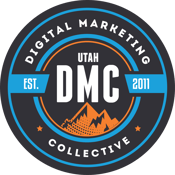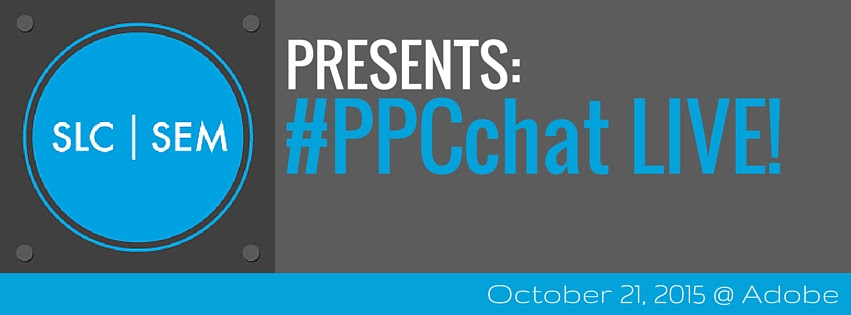
This month we got to hear from the #PPCChat experts, who emphasized two areas that we often overlook in our agencies. Melissa Mackey is the Search Supervisor at Gyro, the largest independent B2B agency in the world. She spoke about what your clients want to know about PPC strategy. And Susan Wenograd, who has made a name for herself in the Fortune 500 club, shared what she focuses on with her clients.
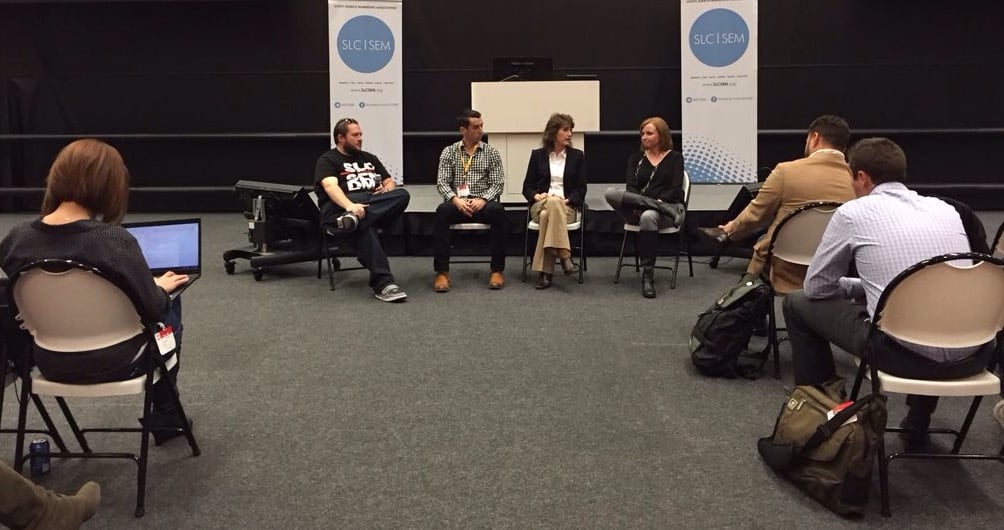
Melissa Mackey: 7 Things About PPC Strategy Your Clients Want To Know
It seems easier to tell clients to just “trust me” instead of breaking things down in a way that will make everything transparent. We can be tempted with the idea that as long as the numbers are good on the monthly report, we’re good and there’s no need to communicate further. Melissa reminds us though, that clients will worry, stress, and fidget over the unknown and/or uncommunicated. They may even worry about topics that they originally tell you they are NOT worried about! So, here are seven must-communicate topics for preventing fear and promoting confidence within your clients.
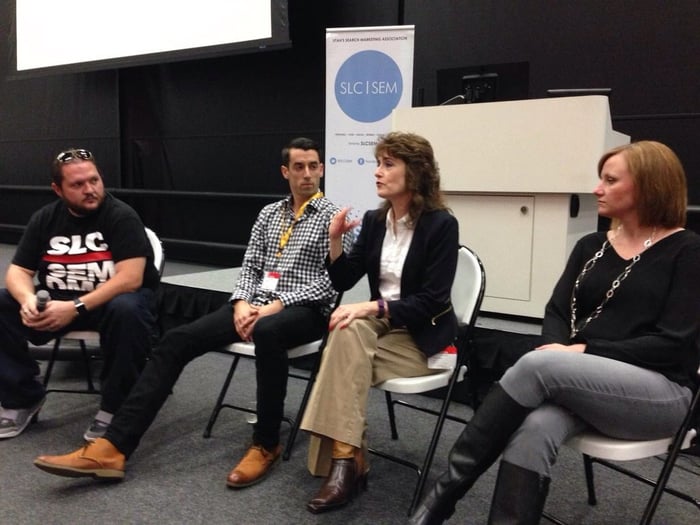
1. Campaign Goals
It seems obvious, but all-to-often agencies will breeze over both the high level, and the detailed goals. Explaining the purpose of each campaign will put each player on the right team and expectations are much more likely to be met. Pain points, business needs, and the company’s overall strategy are the topics for this discussion.
2. More Leads, Less Cost
Don’t get caught up talking too much about clicks, impressions, and CTR. What is most important to the client is more leads for less cost. While branding and name recognition may be important, make sure they know that leads are the primary focus.
3. Rate Against Competitors
Clients may not say they are thinking of this or want you to report on this, but they do care and worry about how they stack up against their competitors. Provide them with competitor reviews each quarter. If this report is unexpected, praises will be forthcoming. Tools like
SEM Rush
will be helpful in providing these reports.
4. Why Those Keywords
A paid search specialist’s idea of a good keyword is likely different than that of a high-level executive. Have a conversation about what short and long-tail keywords are and explain why some keywords are better than others.
5. What’s Wrong With My Landing Page?
Sometimes clients may not understand why we shouldn't be sending prospects to their homepage, which is the worst option in most cases. Educating them on the customer journey and why people are much more likely to convert if they are getting sent to directly what they are looking for is critical.
Key action: If they will not get their team to create alternate landing pages to test, make one yourself as a proof-of-concept and deliver the results. If the results justify the change, relevant landing pages will make a big difference on returns for the client.
6. When Will I See Results?
Along with campaign goals, make sure the client knows upfront when they will be receiving reports. The expectation should be one report a month in most cases. Find out which data points are crucial to the goals, not which data points they prefer to see. Don’t allow reporting to be a time suck!
7. Did It Work?
Did we achieve the client’s KPIs? How about cost per lead goal? Were expectations met? Reporting on clicks and impressions is just not enough.
Tip: It’s okay to use other methods to show numbers besides graphs (thermometers, filled glasses, muscle growth, etc).
A big thanks to Melissa for sharing her client insights!
Susan Wenograd: Retargeting Tips For Search Marketing
Don’t make that dire classic retargeting mistake. Don’t be the marketer that selects “All Visitors - 30 Days” and nod in satisfaction. “Too many advertisers are asleep at the remarketing wheel, using methods that don’t fit. [They] annoy visitors until they’ve completely burned them out. Let’s talk about how to not be that guy.”
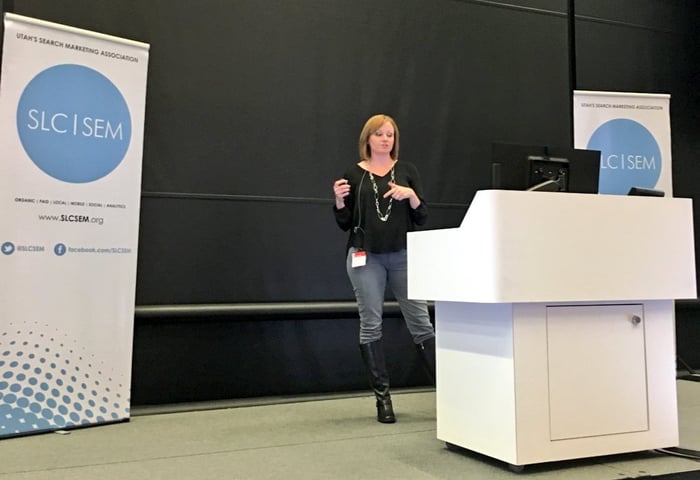
Take What You Know
As a business, it’s not easy to find all kinds of information about the site, its visitors, and the who, what, and why people buy the company’s products. Let’s use that information to our advantage. Let’s not do our visitors the disservice of remarketing a product they’ve already purchased for the next 29 days.
Form Some Selling Strategies
- Strategic Incentives
- Free Trials
- Post-Purchase Add-Ons
- Deal-Closing Offers
- Upgrades
Where do each of these fall into the sales cycle for prospective customers? What is in place now, or missing, from our current strategy?
Form Some Audience Segments
There are points along the sales cycle that customers are slipping away. Let’s focus on those. Do we have cart abandoners, purchasers of X product, or non-purchasers who visited X page? Now, what ads and strategies can we use to capture those customers?
Here's an example of what this blueprint could look like:

Remember two things:
Audiences: These are somewhat baked in. Adwords makes it pretty simple to pick the segment of audience that is desired.
Combinations of those audiences: These are more complicated but very helpful. The use of “And” / “Or” make the sorting difficult to understand at times, but have the ability to really narrow in the audience.
Ideas:
- Offline-specific URLs as their own audience
- Promotions of add-ons/accessories to what user has purchased
- Purchases that expire or are up for renewal
- Follow up for email sign-up
- Holiday timing to past purchasers and visitors
- Visitors who came from a certain site
- Refer-a-friend discounts for purchasers
Rules To Avoid Being Creepy, Boring, Irrelevant, or Annoying
- Timing - Be thoughtful and be specific. Know when to stop by knowing your “time to purchase” metrics.
- Impression/frequency caps on display - Right away, if there is no cap on impressions, change that.
- Messaging - know the journey the customer is going on. Dial into that and create relevance from this information.
- Relevance - Homepage visitors, content readers, cart abandoners, purchasers. They are all different people, and if they are the same person, they must still be treated differently depending on where they are at in the customer journey.
Above all, remember that customers can burn out!
Marketers must focus their efforts on staying relevant and timely with their remarketing. Thanks to Susan for the important retargeting reminders.
About the Author Bryan Phelps is SLC|SEM’s Membership Director and is the CEO of
Big Leap. Big Leap is one of Utah’s fastest-growing internet marketing companies, providing a full range of services to mid-to-large companies.
